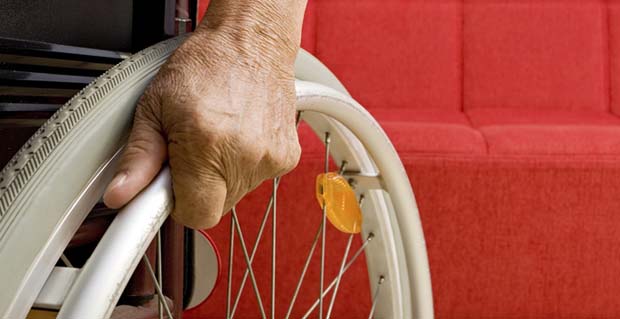
Exercises are a universal need irrespective of status, gender or age. When it comes to elders, however, the exercises need to be gentle and slow to cater to the special needs of an aged body. If the elderly people happen to be confined to a wheelchair, then specific exercises directed at some joints and muscles are necessary. These exercises will keep the joints lubricated and the blood circulation going. They will prevent pain, increase endurance and promote flexibility. They are easy to learn and simple to do. However, before you actually do these exercises, it would be advisable to consult your physician once.
Grip strengthening squeezes
As age advances, it gets increasingly difficult to clutch, hold and lift things. Grip strengthening will help to improve on all these three fronts. The National Institute on Aging has recommended an exercise in order to strengthen the grip. For this exercise, a ball which is the size of a tennis ball would be needed. It should preferably be soft.
Sit upright in the wheelchair. Place the ball in the palm of your right hand. Slowly and gently, begin to squeeze the ball. Squeeze it as hard as possible without straining yourself or causing any pain to your hands. Hold the squeeze for about 5-6 seconds. Gently and gradually, reduce the pressure and tension. Relax for about 5-6 seconds now before repeating the entire sequence for another 10-15 times. Next, place the ball in the palm of the left hand and repeat the procedure. This exercise should be performed at least 3 -5 times in a day.
Arm raises
Arm raises help to strengthen the shoulders, biceps and triceps. They are helpful in maintaining the overall health of the arm. The raises come in two varieties. For the front arm raise, stretch out your hands in front of you with the palms facing each other. Hold a lightweight ball, a beachball for example, in between the palms and slowly raise the arms to the shoulder level. maintain that position for 2-3 seconds before slowly lowering the arms. Perform this exercise about 10-15 times.
For the side arm raise, place your feet firmly on the floor, about shoulder-wide. Take a 1 lb or 2 lb ( as per convenience) weight in each hand with the palm facing inwards. Take a deep breath. As you breathe out, slowly raise your arms to the sides. Lift them up to shoulder height and maintain the position for about 2 seconds. Inhale and lower the arms back to the original position. Relax for about 30 seconds and repeat about 10-15 ties daily.
Ankle circles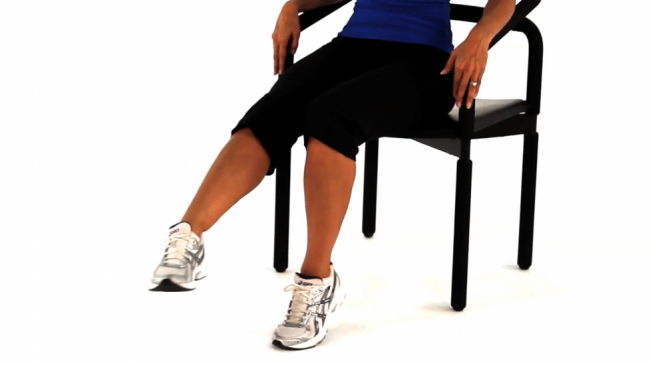
When life gets restricted to a wheelchair, the ankle joints suffer from lack of movement and exercise. It is thus of paramount importance, especially for the elderly, to exercise the ankles. Ankle circles will ensure that the ankles are well-lubricated and healthy. Sit upright in the wheelchair. Slowly, raise your right leg to a height of about a foot from the ground. Gently, start drawing circles in a clockwise direction with your toes. Make about 5-7 circles and bring your foot down. Rest for about 10 seconds and raise it again. This time, make circles in the anti-clockwise direction. Once the right leg has been completed, it is time to raise the left foot and exercise the left ankle in the same manner. Do about 15 cycles for each foot and ankle on a daily basis.
Isometric exercises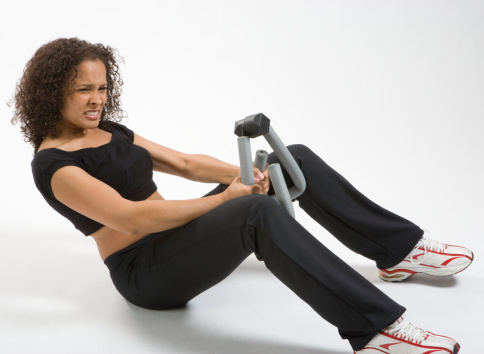
Life in a wheelchair requires some very specific exercises. This is because, compared to a normal person, different muscles have to be utilized. The muscles of the hip and buttocks need to be strengthened to assist in sitting all day long. Isometrics involve contracting and squeezing the muscles. They improve the blood circulation and do not strain any of the joints in the body. The Orthopedics and Sports Medicine Department in the University of Washington recommend the strengthening of the hips and buttocks by tightening and squeezing the buttock muscles. Hold the squeeze for about 5 seconds and then relax for about 10 seconds after releasing the tension. Now, lean over to sit only on one hip. Tighten your abdominal muscles and hold for about 5 seconds. Return to the original position and repeat with the other side of the hip also.
Upper body stretches and rotation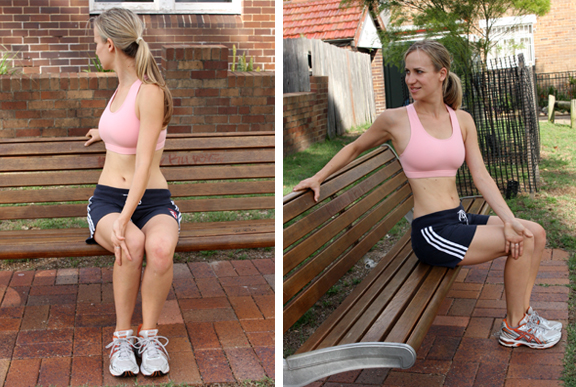
Sitting on a wheelchair, the upper body will have to be more flexible than normal. To keep the upper body supple and flexible, stretches and rotations are advised. Sit upright in the wheelchair. Place your right arm behind the back of your wheelchair. Rotate the body and reach your left arm across your body in such a way that your face is looking at your right. Now return to the original position and do this rotation by placing the left hand behind the chair and stretching with the right arm across the body.
While just sitting upright itself is good for the spine, it would help better to do some top stretches. Hold your arms straight above so that your shoulders touch the ears. Interlock the fingers such that the palms are facing upwards. Stretch your arms as much as possible and hold the stretch for about 5 seconds before returning to original position.
Knee extensions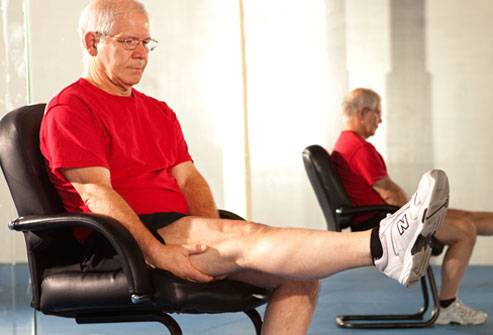
The legs are often neglected while sitting in a wheelchair and here is one exercise that will simultaneously strengthen the abdominal muscles, hamstrings, the thighs and the quadriceps. Sit erect in the wheelchair. Hold on to the sides with your hands and slowly raise one leg. Stretch it out straight in front of you, parallel to the ground. Ensure that your knees do not touch each other. Lower the leg and repeat the same with the other leg. Two sets of 8-10 repetitions will lend overall tone to the legs.


